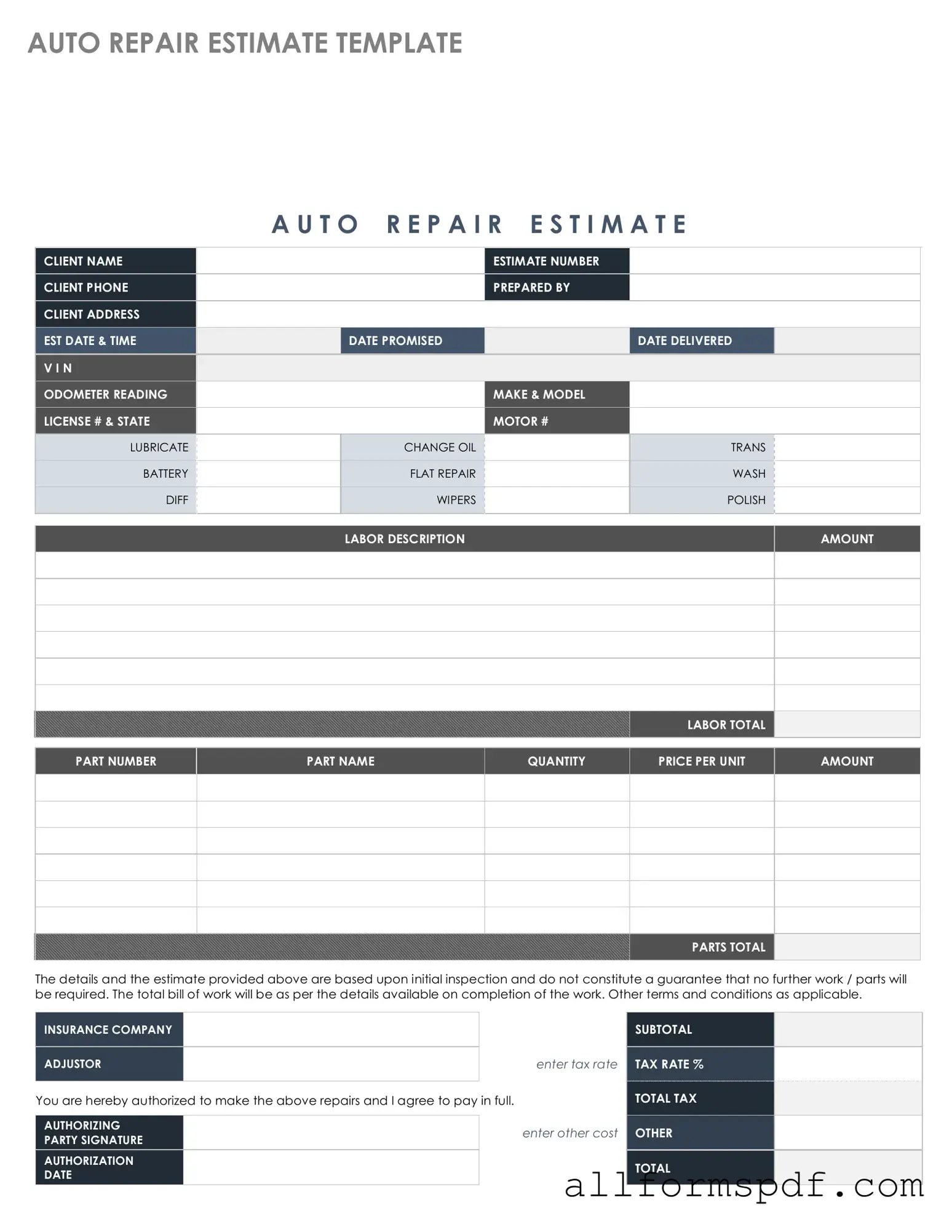Filling out an Auto Repair Estimate form can seem straightforward, but many people make common mistakes that can lead to delays or misunderstandings. One frequent error is failing to provide complete contact information. Without accurate details, the repair shop may struggle to reach you for updates or clarifications. Always double-check that your phone number and email address are correct.
Another mistake is neglecting to describe the vehicle's issues thoroughly. Providing vague descriptions can lead to miscommunication about what needs to be repaired. Instead of saying, "it makes a noise," specify the type of noise and when it occurs. This information helps the mechanic diagnose the problem more effectively.
People often forget to include the vehicle's make, model, and year. This information is crucial for the repair shop to understand the specific parts and services needed. Omitting these details can result in inaccurate estimates and potential delays in getting your vehicle back on the road.
Some individuals overlook the importance of listing any previous repairs or maintenance. This history can give the mechanic valuable context about the vehicle's condition. If you’ve had similar issues before, mention those repairs. It can save time and help avoid unnecessary work.
Another common mistake is not asking for clarification on the estimate itself. If something seems unclear, don’t hesitate to ask questions. Understanding the breakdown of costs and services can prevent surprises later on. Clear communication is essential for a smooth repair process.
People sometimes rush through the form, which can lead to errors. Take your time to review each section carefully. A rushed form may contain typos or missing information, which can complicate the repair process.
Lastly, failing to keep a copy of the completed estimate is a mistake many make. Having a copy for your records is important for tracking repairs and understanding costs. It can also be helpful if you need to refer back to the estimate later.
